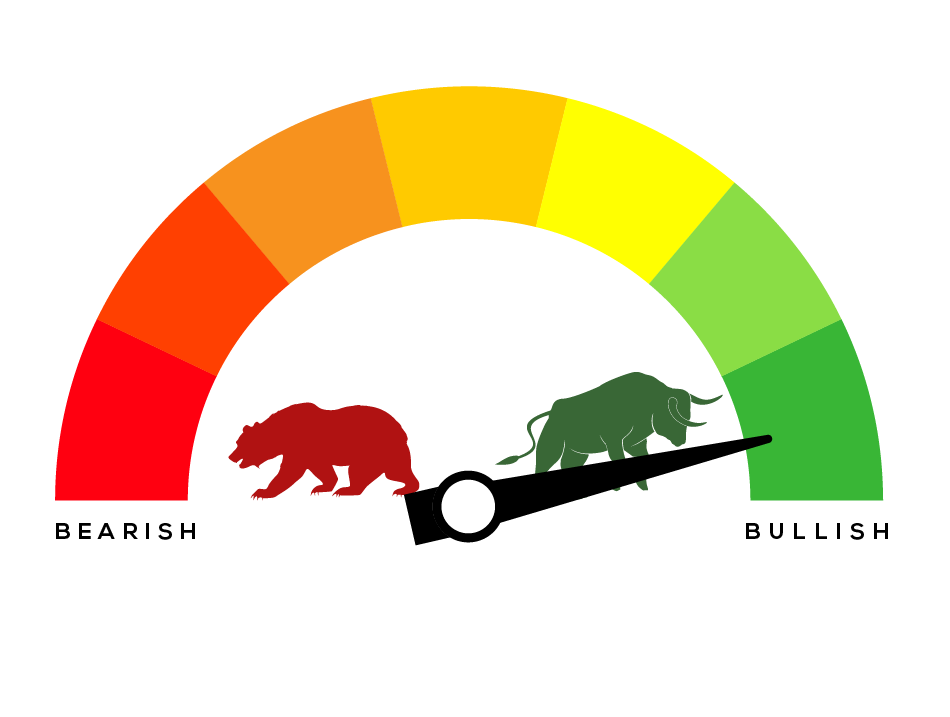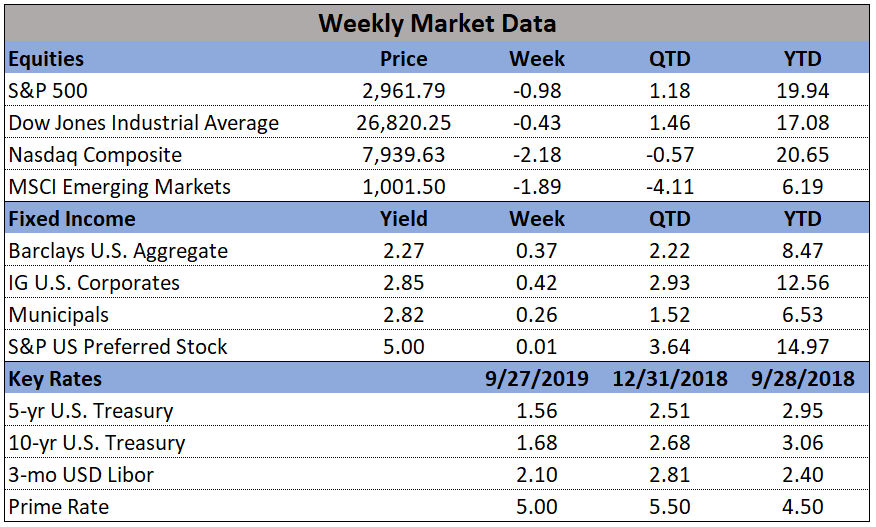U.S. equities rose on strong labor reports and a modest wage increase erased some concerns of an overheating in the economy. Meanwhile our Short Term Indicator went Bullish.
- The Nasdaq Composite hit a new record, and all of major U.S. indexes were brought back into positive territory year-to- date following a strong rally on Friday. The technology-heavy NASDAQ fared the best of the major indexes while the small-cap Russell 2000 also performed especially well. The Dow Jones Industrial Average added almost 800 points last week, rising 3.3% and closing at 25,335.74. The Nasdaq Composite rose 4.2% and closed at 7,560—an all-time high. By market cap, small caps outperformed large caps with the small cap Russell 2000 and mid cap S&P 400 gaining 4.2% and 3.8%, respectively, while the large cap S&P 500 added 3.5%.
- International Markets: Canada’s TSX reversed most of last week’s losses rising 1.3%. In Europe, major markets were all in the green. The United Kingdom’s FTSE added 3.8%, France’s CAC 40 rose 2.7%, and Germany’s DAX gained 3.6%. In Asia, China’s Shanghai Composite rebounded 1.6% from last week’s close and Japan’s Nikkei finished up 1.4%. As grouped by Morgan Stanley Capital International, developed markets added 2.0% while emerging markets gained 3.4%.

- Commodities: In contrast to the strong move upward in world equity markets, gold remained essentially flat rising just $0.60 on the week and closing at $1324 an ounce. Silver added $0.14 to close at $16.61, a gain of 0.9%. The industrial metal copper, viewed by many analysts as an indicator of global economic health due to its variety of uses, gained 0.4% last week. In energy, the price of West Texas Intermediate crude oil rose $0.79 to $62.04 per barrel, a gain of 1.3%.
- U.S. Economic News: According to the Labor Department, the U.S. added 313,000 new jobs in February. This was a blowout that crushed expectations. Economists had been expecting nonfarm payroll growth of only 200,000. In addition, the Labor Department reported an increase in the labor force participation rate to its highest level since September, with the total employed up 785,000 to a record 155.2 million. Greg Peters, senior investment officer at PGIM Fixed Income stated, “The underlying economic growth is quite strong, but there's no real pressures from a wages and inflation standpoint. It's very good for risk assets.” In the details of the report, construction jobs led the way with 61,000 new positions, followed by retail and professional and business services (50,000 each). And it appears inflation may be held in check for a bit longer, wage growth came in less than expected, up just 0.1% for the month.

Please visit our website www.pacificinvestmentresearch.com for more insights. Email us at info@pacificinvestmentresearch.com if you have any questions.








